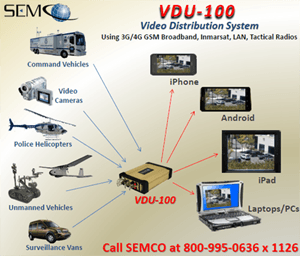by Kelsey McIlroy.png)
A choice to be a first responder is a choice to engage with challenging, dangerous work in which every day will be different, each call can be unpredictable, and support may be far away. Robots are not a substitute for the training, tactics, creativity, and passion demonstrated by these sworn members and volunteers in carrying out their duties, but they can help to supplement and enhance the information they receive. The use of Unmanned Aerial Vehicles (UAVs) in difficult scenarios and disaster relief provides the opportunity to augment a service member’s line of sight, opening it from the ground to the sky. This can be used to create an overview, employ sensors, gain foresight into the conditions one will enter, and provide new options for situational resolution.
The use of unmanned craft in forest fire evaluation and fighting can provide invaluable information about the dimensions and characteristics of a blaze, while dramatically reducing the possibility of physical risk to the pilot. Used in conjunction with satellite imagery, aircraft are able to confirm and refine measurements, as well as monitor conditions as a response is coordinated. Updated information, often provided in near real-time, can also assist in assessing the placement of resources, while attempting to mitigate the risk to firefighters. This utility has proven itself repeatedly in field operations, including a 2009 forest fire in Alaska, during which a Scan Eagle UAV was able to fly low and provide infrared visibility in a smoke-filled area inaccessible to conventional aircraft (1). The versatility of UAVs in accommodating sensors and processing equipment also opens the possibility of preventative measures such as fire-risk diagrams and vegetation mapping, as well as contributing to the post-event analysis and reconstruction (2).
Similar capabilities have potential applications for firefighters working in urban environments. The growing field of small, lightweight UAVs with interchangeable sensor components has begun to produce versatile aircraft suited to the needs of fire agencies dealing with calls from house fires to hazmat situations. This includes the ability to potentially identify low-oxygen areas and other common safety hazards as well as obtaining general visibility. A comprehensive viewpoint could also be used to assist in selecting the point of entry and determining the best route to remove victims trapped inside. In Mesa County, Colorado, a DraganFlyer X6 UAV owned by the sheriff’s office was used by the fire department to identify hot spots in a building fire, reducing the possibility of further injuries after a firefighter fell through the floor (3). This employment in the analysis of high-risk areas also demonstrates the rapid repurposing of a UAV that departments can employ when the technology is made available.
An aerial perspective also offers a range of advantages for law enforcement, both in terms of officer safety and conflict resolution, and in basic investigation and documentation. Surveillance of an area to locate cover, potential blind spots, and the presence of threats or hazards can supplement or confirm information obtained through interviews and building diagrams prior to entry. In an active shooter scenario, UAVs that are capable of providing a visual of the suspect, as well as identifying and tracking the location of multiple shooters through infrared and acoustic mapping in a complex urban setting, are already entering the marketplace (4). These uses have been tested and applied in military environments, often on a scale that far exceeds the requirements of domestic law enforcement personnel, and could be modified and scaled back to more closely match the needs and budget in a US urban setting. In addition to rare but resource-heavy scenarios, UAVs have already demonstrated their utility in day-to-day police activities. In Saskatoon, Canada, broad approval for the use of the DraganFlyer X6 by law enforcement within a 250-kilometer radius of the city has enabled police to routinely use the aircraft for traffic accident investigation and photography. This has become especially beneficial in areas where extreme cold and low-lighting conditions make expedited documentation a priority (5).
The usefulness of robotic technology is dependent on the high levels of competence and skill in the first responders employing it. As the use of UAVs becomes more common, their utility will expand beyond the capabilities designed by manufacturers and engineers, as users adapt to and challenge them to meet their needs in the field. This creative and pragmatic use of technology has the opportunity to enhance not just the lives of first responders, but the field of robotics; as new feedback is provided, the challenge moves to developers to listen, learn, and to match the enthusiasm and passion shown for this vital work.
1. “UAV in a Firefight of a Different Kind.” Paur, Jason; Wired Magazine, 2009 http://www.wired.com/autopia/2009/08/firefighting-uav/
2. A. Ollero 1, J. R. Martínez-de-Dios 1, L Merino. “Unmanned Aerial Vehicles as tools for forest-fire fighting,” University of Seville, Seville, Spain, 2006
3. “Colorado Firefighters use DraganFlyer UAS,” Earth Imaging Journal, 2011; http://eijournal.com/2011/colorado-firefighters-use-draganflyer-uas
4. “Autonomous UAV-Based Mapping of Large-Scale Urban Firefights,” Snarski, S. et al; SPIE Defense and Security Symposium, 2006
5. “Draganflyer VTOL UAV Helicopter Used in Extreme Cold Temperature for Urban Traffic Police Investigation,” DragonFly Innovations; 2009. http://www.draganfly.com/news/2010/01/21/draganflyer-vtol-uav-helicopter...









